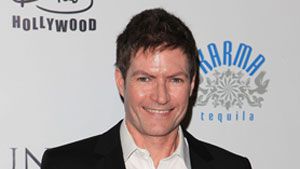Heidi Montag’s relationship with the world of plastic surgery is a microcosm of a broader cultural phenomenon: the intersection of celebrity, beauty standards, and personal choice. The tragic passing of Frank Ryan, her plastic surgeon, has reignited public interest in the dynamics of surgical enhancement and its implications on self-image and societal norms.
Frank Ryan was not just a skilled surgeon but a figure emblematic of the shifting perceptions surrounding cosmetic enhancement. His work with Montag, a prominent reality television star, brought him into the limelight. Montag’s dramatic transformation—highlighted by multiple surgeries—was a catalyst for discussions about the pressures faced by modern women, particularly those in the public eye. This phenomenon raises probing questions: Why do we feel compelled to reshape ourselves to fit perceived ideals? And what drives our fascination with those who make such choices?
In the wake of Ryan’s death, it’s essential to reflect on the ethical complexities surrounding plastic surgery. Many individuals regard surgery as a gateway to confidence, yet it can simultaneously be a reflection of deeper insecurities. Montag’s candid admissions about her dissatisfaction with her appearance resonate with countless individuals grappling with similar issues. These admissions illustrate how public personas often mask internal conflicts. The allure of physical perfection, often perpetuated by media portrayals, places undue pressure on individuals to conform to unattainable standards. The tragic irony is that the very people we idolize for their beauty may harbor the same self-doubt as the rest of society.
The surgical journey often blurs the lines between personal choice and societal pressure. Ryan’s role in this narrative highlights the responsibility of practitioners. Their influence can either bolster a patient’s self-worth or exacerbate existing vulnerabilities. As such, his legacy invites scrutiny into the plastic surgery industry as a whole. With Montag’s experiences, the conversation shifts toward the question of accountability. Are surgeons merely artisans crafting beauty, or do they bear a moral obligation to guide their patients through the emotional labyrinth that often accompanies such drastic transformations?
Moreover, the public’s fascination with Montag’s surgeries speaks to a larger dichotomy in modern culture. On one hand, there’s a celebration of individuality and self-expression; on the other, a relentless critique of those who seek alterations. This dichotomy begs the question: are we mere consumers of these transformations, or do we bear some responsibility for the standards we propagate?
As the dust settles on Ryan’s legacy, one must ponder the nuanced interplay between vanity, vulnerability, and the relentless pursuit of beauty. The tragedies and triumphs of individuals like Montag serve as essential reminders of the complex terrain navigated within society’s evolving standards of aesthetics. In this intricate dance, the narratives we craft collectively shape the attitudes towards not only those in the spotlight but everyone wrestling with their own reflections.
